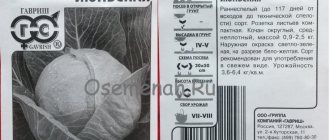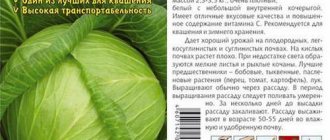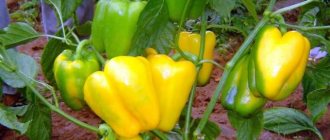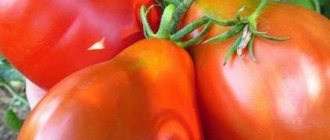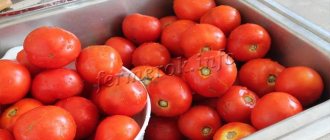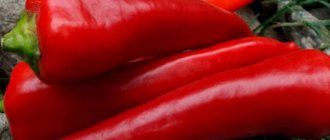The pear as a cultivated fruit tree has been grown in different countries of the world for thousands of years. Over the centuries, hundreds of varieties of pear trees have been developed naturally and thanks to the efforts of breeders. And choosing specific varieties for your garden plot from such a large number of varieties is difficult not only for beginning summer residents, but also for gardeners with extensive experience.
First of all, you should decide what qualities fruit trees that are going to be planted in a particular Russian region should have, and then read information about pear varieties on special websites.
History of the variety's creation
The history of this variety begins at the beginning of this century, when the Russian breeder S.P. Yakovlev crossed the unpretentious, cold-resistant Tenderness pear with one of the best Australian varieties, Triumph Pakgama. The new variety, obtained as a result of breeding work, was named “August Dew”.
It acquired many positive qualities from its “parents”, passed tests, and in 2002 Augustow dew was zoned for cultivation in the Central Black Earth region.
And from that time on, this variety began to gain popularity among Russian gardeners from different regions, who quickly appreciated the advantages of the August Dew pear. As a result, this pear can now be found in many small gardens and large farms.
Harvest and storage
August dew begins to bear fruit 3-4 years after planting. Pears ripen in early to mid-August and stay quite firmly on the branches for a month. The recommended period for picking fruits for fresh consumption is September 5-20.
The yield level is relatively high. In the first years, the tree can bear from 10 to 15 kg of fruit, and then the harvest volume reaches 200 kg per 1 ha.
The yield of trees in the fourth year after planting can reach 15 kg per tree
Under normal conditions, fruits remain marketable for up to 2 weeks. When stored in the refrigerator, pears do not lose their taste for 3 months.
Main characteristics
The pear of this variety is one of the most beautiful fruit trees, which will adorn any garden thanks to its grace and sophistication. The height of these fruit trees rarely exceeds 3 m, the crown is drooping, with an average number of skeletal branches and side shoots.
The branches are straight, located at an acute angle to the central trunk, covered with smooth light gray bark, well leafy. The foliage is medium in size, ovate, with small thin tips, dark emerald in color.
Skeletal branches are actively formed and in the spring the buds actively bloom, bright foliage and a large number of small flowers collected in inflorescences appear. Each of them has up to 10 buds. With active fertilization, a large number of ovaries are formed on the branches.
Description of the fruit
Usually gardeners are most interested in the description of the fruit - shape, taste, color. And this pear variety is one of the best in terms of these indicators. The fruits of August dew are large and juicy. The average weight of ripe pears is 120-145 g. And with good care, the weight of the fruit can increase to 190-195 g.
Another advantage of the August Dew variety is that all the fruits are approximately the same size and weight; this presentation is highly valued when selling the crop on the market.
Pears of this variety have a classic shape. Their skin is smooth and has no ribbing. During the ripening process, the green skin acquires a yellowish tint. And on some fruits a pinkish blush appears. A large number of small dots are clearly visible under the skin.
The fruits are attached to the shoots by thick stalks. The skin is dull, but smooth, and when eaten it is practically not felt. The pear pulp is snow-white with a slight grain; in its center there is a seed chamber containing 4-5 small brown grains.
Ripe fruits have an excellent taste - sweet, juicy and at the same time tender, with a slight sourness. The pulp literally melts in your mouth. Experts believe that this pear variety is one of the best among table pear trees. Tasting assessment of ripe pears of the Augustow dew variety – 4.6 points out of 5 possible
The sweetness of the fruits of this variety is given by a large amount of sugars - about 8.5%.
These fruits also contain the following substances:
- pectins;
- tetratable acids;
- vitamin C;
- arbutin;
- P-active substances.
A set of these substances can bring great benefits to the human body, in addition, it gives a special taste to ripe fruits. And pears with such a composition of valuable substances can only be given in the form of puree from 5 months.
Features of the variety
The harvested crop has a universal purpose - it is used for preparing baby food, fresh, for making preserves, jellies, compote. Experts do not recommend drying ripe fruits of this variety, as they are too juicy.
Pears can easily withstand transportation over any distance without losing their presentation and taste; they can be stored for quite a long time - up to 2 months in room conditions, and in a cool cellar, pears of the August Dew variety can be stored for up to 5 months.
This pear tree is distinguished by its high hardiness and resistance to frost. This pear is not afraid of cool rainy seasons or extreme heat. And after damage or slight frostbite, the August dew pear recovers within a short period of time.
Productivity
The "August Dew" pear is a mid-season variety - pears begin to ripen in the second ten days of August, and the fruit ripens en masse in the first half of September. ripe pears are perfectly held on the stalks and are practically not prone to shedding. The harvest has to be collected from the tree by picking the fruits manually or with the help of devices.
Fruiting of young trees begins in the third season, but there is no large yield at this time, so experienced gardeners recommend plucking flowers at the beginning of fruiting so that the trees grow faster and become stronger.
But already from the 4th season, each young tree can produce up to 20 kg of large, sweet fruits. The older the pear, the greater its yield - up to 180-190 kg of ripe fruit is harvested from mature pear trees. The marketability of the harvested crop is high - about 92%.
Pollinator trees
The August dew pear has a low level of self-fertility. Therefore, for good fertilization of flowers, it is necessary to plant other pear varieties with the same flowering periods nearby. The best pollinator variety for the August Dew pear is the Pamyati Yakovlev variety.
Experts recommend planting seedlings of these two varieties on the site at the same time so that in the future, with the beginning of fruiting, these pear trees will cross-pollinate each other. In this case, the yield of both varieties will be no less than that indicated in the descriptions of the originators of these pear trees.
Diseases and pests
One of the advantages of this variety is its high resistance to scab. But “August dew” does not have immunity to other diseases characteristic of pears, so it is necessary to carry out timely treatments and apply other preventive measures against black cancer, powdery mildew, mosaic and other diseases.
Advantages and disadvantages
The main advantages of the August Dew pear variety include:
- good taste of ripe fruits;
- the yield of this pear is significant;
- ripe fruits contain many useful substances, so the fruits can be used to prepare food for infants;
- pear trees of this variety are resistant to severe frosts and periods of drought;
- the pear is not subject to scab;
- the appearance of ripe fruits is beautiful;
- the harvested crop tolerates transportation well at any distance and can be stored until the New Year and even longer in the cellar;
- the harvested crop is of universal use.
But you need to know about some of the disadvantages of these pear trees:
- The August dew pear is distinguished by its frequency of fruiting;
- the variety is self-sterile, so pollinator trees with the same flowering period must be grown next to it;
- with abundant fruiting, only 71-73% of fruits can be marketable;
- This variety is not resistant to many diseases characteristic of pear trees.
Advantages and disadvantages
Analyzing the description, photos and reviews of the “August Dew” pear, we can draw a conclusion by highlighting the comparative advantages and disadvantages of this variety. So, the advantages of the proposed pear are:
- excellent fruit taste;
- high yield of the variety;
- balanced composition of microelements and the ability to use fruits for preparing baby food;
- high resistance of trees to freezing and drought;
- immunity to scab;
- excellent commercial quality;
- possibility of long-term storage of pears;
- universal purpose of fruits.
Unfortunately, there is no need to talk only about the advantages of the variety, because it also has some disadvantages that a gardener who decides to plant such a fruit tree on his plot should be aware of:
- Fruiting of the “August” pear is periodic;
- to obtain high yields, a pollinator must be grown near the tree;
- during years of abundant fruiting, fruit marketability can decrease by up to 70%;
- low resistance to many diseases characteristic of the culture.
Thus, every gardener, before purchasing a seedling, must carefully study the proposed advantages and disadvantages, evaluate them and make the right decision for himself about choosing a variety. An objective assessment of the variety will guarantee that the farmer will not be disappointed in the result obtained and will make every effort to eliminate known, existing shortcomings.
Even more information about the August Dew variety can be found in the video:
Planting the August Dew pear
After choosing a specific pear variety, you need to familiarize yourself with the nuances of its planting and further cultivation. Frost-resistant seedlings of this pear are usually planted in the autumn, about 25-30 days before the onset of cold weather - in this case, the young trees have time to take root and strengthen before winter.
The distance between this pear and other fruit trees, as well as to country houses, should be at least 2 m. The area under the pear should be well lit, protected from strong winds.
The trees to be planted must be 2 years old. Older seedlings do not take root well and get sick for a long time, since during transplantation their root system is often severely damaged, which is practically not restored in the future. As a result, the tree dies
The planting hole for planting pears is prepared in advance, at least 2-3 weeks in advance. A layer of drainage 4-5 cm thick is laid on the bottom, then a nutrient substrate, which includes humus, rotted manure, wood ash, fertilizers containing phosphorus and potassium.
A layer of garden soil is laid on top so thick that the root system of the tree does not come into contact with the nutrient substrate, otherwise fertilizers can burn the tender roots. Afterwards, the soil is compacted and 10-15 liters of water are added under each tree.
Diseases and pests - main types, prevention and control
The high immunity of August dew to major diseases does not exempt the gardener from performing sanitary and preventive work.
Prevention measures:
- Maintaining order on the site, timely removal of weeds, collection and disposal of fallen leaves, dry branches, etc. - these simple measures will deprive pests of shelter and significantly reduce their presence.
- Monitoring the condition of tree bark. Before the pear leaves for winter, the bark should be examined, and if cracks and damage are found, they should be healed. To do this, such places are cleaned down to healthy wood, then disinfected with a 1% solution of copper sulfate and covered with a layer of garden varnish.
- Whitewashing trunks and thick branches with lime mortar. This not only decorates the garden, but also protects the bark from sunburn. Some caterpillars and bugs will not want to crawl through the lime barrier - this will prevent them from getting onto the crown.
- Digging the soil around the tree trunks before the onset of frost. In this case, it is necessary to turn over the layers of earth so that the insect pests overwintering there are raised to the surface, after which they can die from the cold.
- Spraying the dug up soil and tree crowns with a 3% solution of copper sulfate. This will destroy fungal and insect spores. It is also useful to do such spraying in early spring, before the sap begins to flow. Instead of copper sulfate, you can use Bordeaux mixture in the same concentration or a 5% solution of iron sulfate.
In late autumn and early spring, the pear is sprayed with a 3% solution of copper sulfate
- Installation of trapping belts on tree trunks in early spring. This measure will prevent weevils, codling moth caterpillars, and ants carrying aphids from entering the crown.
- Treatment with pesticides DNOC and Nitrafen. The first is used once every 3 years, the second - in the remaining 2 years. These potent universal drugs are an effective measure for the prevention of all known fungal diseases and pests. After the end of flowering, pears switch to the use of low-hazard systemic fungicides. The most famous and popular: Skor,
- Quadris,
- Horus,
- Ridomil Gold and others.
As a rule, after three uses the effectiveness of the product decreases significantly. Therefore, they need to be alternated, and immediately before harvesting the fruits, drugs with a short waiting period are used. For Horus this period is 7 days, and for Quadris it is 5. The treatment interval is 15–20 days. They are especially important after rains, when favorable conditions are created for fungi.
Possible diseases and pests of pear
Although the variety is immune to some diseases, under unfavorable conditions they can still occur.
Table: what can a pear get sick with?
| Disease | Signs | Damage | Treatment |
| Scab | Olive-colored spots appear on the leaves. Subsequently, the fruits are affected, on which putrefactive spots and cracks form, and the flesh hardens. | The fruits become unfit for consumption. Significant yield loss is possible. |
|
| Moniliosis (monilial burn) | During the flowering period, the pathogen reaches flowers with pollen brought by bees. Developing in flowers, the fungus further penetrates shoots and leaves. The affected parts of the plant wither, curl, and turn black. External signs resemble burns or frostbite. During the period of fruit growth and ripening, the fungus infects them with gray rot, making them unfit for consumption. | It is expressed in the loss of part of the shoots and fruits. If it spreads significantly, the entire tree may die. |
|
| Sooty fungus | Affected leaves and fruits become covered with a black coating resembling soot. As a rule, the appearance of this fungus is preceded by an aphid attack. Her sweet secretions are a breeding ground for sooty fungus. | The fruits become unfit for consumption. Significant yield loss is possible. |
|
Photo gallery: main pear diseases
Putrefactive spots form on scab-affected pear fruits
During the period of growth and ripening of pear fruits, moniliosis affects them with gray rot
Pear leaves affected by sooty fungus become covered with a black coating resembling soot
Table: probable pear pests
| Pests | Signs of an attack | Damage | Ways to fight |
| Aphid | You can determine the appearance of aphids by the leaves curled into a tube. Having unfolded such a leaf, the gardener will see small insects of black, green, white and other colors - this means that aphids have fallen on the pear. It can also settle on the tips of young shoots. It gets to the crown with the help of ants, which bring aphids in order to subsequently feed on its sweet secretions. | If aphids are not controlled, they can cause significant damage to the crown. |
|
| Pear flower beetle | The pear flower beetle overwinters in the soil of tree trunks. In early spring it rises to the surface, then into the crown of the tree. It is difficult to see due to the small size and shyness of the insect. The results of the life activity of the flower beetle are yellowed, eaten away flowers and buds. | If the pest is not prevented, then you can lose not only the harvest, but also significantly weaken the tree. | Insecticide treatments and preventive measures. |
| Pear moth | The butterfly lays eggs in the soil, the caterpillars crawling out of them rise to the crown, gnaw holes in the fruits and eat them from the inside. Signs of damage are the appearance of holes on the fruits, as well as the shedding of such fruits. | Loss of harvest. | Prevention only. |
Photo gallery: pear pests
Ants carry aphids onto trees
The pear moth butterfly lays eggs in the soil
The pear flower beetle eats pear flowers
Feeding
In the first couple of seasons, it is not necessary to fertilize the August Dew pear variety if all the necessary microelements were added to the soil during planting. Subsequently, in the spring, before the buds open, any organic matter in the amount of 2 kg should be added to each square of the area of the trunk circle.
During flowering and active formation of ovaries, a solution of boric acid should be added to the tree trunk circles.
You cannot apply fresh manure under this fruit tree - it can cause severe burns to the root system, which will lead to weakening of the entire tree.
How to plant and grow a pear
If the issue of choosing a variety has already been decided, then it’s time to familiarize yourself with detailed information on how to plant and grow a pear. Of course, there are some general recommendations for growing pears as a separate crop. They can be found in the video:
In our article, we will try to talk about some of the features of agricultural technology inherent specifically in the “Augustovskaya Rosa” variety:
- Frost-resistant seedlings are recommended to be planted in autumn.
- The tree must be planted at a distance of at least 2 m from other trees or other stationary objects located on the site.
- It is recommended to grow pears in an open, sunny area.
- Before planting the seedling, you need to prepare a hole, at the bottom of which you should put fertilizer. The created nutrient layer must be covered with a layer of garden soil so that the roots of the seedling placed on top do not come into contact with organic matter and minerals.
- Every year, pear seedlings need to be pruned in the spring before the buds break. In the first year, the main shoot is pruned at a height of 1.5 m. Further pruning must be carried out in accordance with the selected crown formation pattern.
- In the first years of fruiting, fragile branches of the fruit tree need to be supported so that they do not break off under the weight of the fruit.
- Seedlings and mature trees need to be watered 5 times a month during fruiting.
- It is recommended to wrap the trunk of young seedlings in burlap or other breathable material for the winter to prevent freezing.
- The pear tree needs to be fed annually in the spring by adding 2 kg of rotted organic matter for every 1 m2 of tree trunk circle.
- Whitening the stem of a pear in late autumn helps protect the plant from sunburn and some diseases.
- A 0.1% aqueous solution of boric acid should be used to water pears at the time of flowering and ovary formation. This will increase the yield of the crop and improve the taste of the fruit.
"August" pear has the highest degree of self-healing. This helps her survive even in the most difficult conditions. So, even after severe frostbite, a tree in the spring may be late to open buds on damaged shoots. If this does not happen, then you can cut off the frozen branches completely and cover the cut area with garden varnish. As a rule, dormant pear buds, even after deep pruning, form new skeletal branches over several years and, having completely restored the crown, begin to bear fruit.
Preparing for winter
In the first years, the trunks of young August Dew pear seedlings are wrapped with any non-woven material so that they do not freeze. And in mature trees, the lower part of the trunk and the base of the lower branches are whitened with lime to protect against burns caused by the sun's rays and to prevent certain diseases.
Propagation of pears by cuttings
Planting material begins to be prepared in winter. Choose an adult pear branch, at least 2 years old. They make a break while keeping the bark intact. The ideal length of the cutting is from 15 to 20 cm. The fracture site is covered with tape or adhesive tape and fixed to a support.
At the very end of March, the fastening is removed. The branch at the break points is divided to obtain cuttings. The resulting cuttings are placed in a two-liter container. Add crushed activated carbon to the water. Place the container with cuttings on the window. An important condition is a sufficient amount of sunlight. After 20-30 days, roots form.
Propagation of pears by cuttings - video
When the length of the roots reaches 5-7 cm, they are planted in the ground at a permanent place of growth. At this time, it is necessary to protect young trees from too bright light.
Reviews
Olga, 36 years old, Krasnoyarsk region : a pear of this variety has been growing in my garden plot for more than 10 years. The tree is practically not affected by frost, and the yield is high. However, I have nowhere to store such a large amount of fruit, so I collect pears from the tree gradually, using them for food (fortunately, ripe fruits practically do not fall from the tree). I collect everything that is not eaten in mid-September and immediately use it for preservation.
Natalya, 50 years old, Petrozavodsk : I accidentally purchased a seedling of this variety “for rent” when I was buying several fruit tree seedlings for my garden. I planted this pear at the end of my garden and forgot about it. I remembered a few months later when the first harvest began to ripen on this tree. I collected several kilograms of large, sweet and fragrant pears. Since then, the August dew pear regularly gives me many buckets of pears. The tree does not require special care - watering several times a season, fertilizing, and the hardest part is harvesting and further processing of the crop. For summer residents who have little time left to care for fruit trees, I definitely recommend this variety.
Planting, growing care
The variety is unpretentious and the trees will produce crops even with minimal care. But when using a set of agrotechnical measures, you can count not only on a good harvest, but also on an increase in fruit weight above the average. Therefore, it is necessary to choose the right site for a pear orchard and purchase high-quality planting material. After all, as practice shows, a good tree will grow from a good seedling. Is it possible to plant a pear next to a plum? This material will tell you.
It is better to buy planting material from trusted nurseries with certified products.
If you have to transport the seedlings, you need to wrap their roots in damp burlap.
Landing
For proper planting in the spring, you need to choose a place on the site. It must meet the following requirements:
- The area should be open and sunny. Although the pear can also withstand partial shade, so it can be planted near the house;
- The soil should preferably be fertile and light. If the site has loams or poor sandy soils, then they will have to be reclaimed;
- To plant pears, swampy lands must be avoided. And also where groundwater comes close to the surface;
- The acid-base composition of the soil should be within 5.5–6.0.
Before planting seedlings, it is necessary to carefully inspect the root system and remove damaged or rotten areas.
Deadlines
The timing of planting the August dew pear must be planned based on the climatic characteristics of a particular region, as well as the frost resistance of the variety.
Since the August Dew pear variety tolerates temperatures of about 30 degrees below zero, it can be planted both in autumn and spring.
In the spring, bad results can only happen when deadlines are delayed.
Planting of seedlings must be planned before buds bloom on the trees.
In autumn, planting a garden is possible, but only no later than a month before the soil freezes. This article will tell you about red dots on pear leaves.
When planting in autumn, the soil should be sufficiently moist.
Technology and agricultural technology
The process of planting seedlings is standard for all pome trees:
- Dig a hole, apply fertilizer at the rate of 1.0–1.5 buckets of humus or mineral fertilizers. Superphosphate - 250 grams, potassium salt - 100 grams and how much ammonium nitrate. They must be mixed with the soil of the upper humus horizon;
This is the norm for a hole 1.5 meters wide. If it is 1.0 meters, then the amount of fertilizer is halved.
- Drive a wooden or bamboo stake into the hole. The latter will not rot in the ground;
- Place the seedling on the bottom, straighten the roots and make sure that the root collar is flush with the soil;
- For backfilling, take more nutritious soil from the row spacing;
- Thoroughly compact the soil in the hole;
- Water the tree;
- Tie it loosely to the stake with twine.
In the first year after planting, trees need to be watered at least 4 times during the growing season.
What is the best thing to grow from?
Augustovskaya can be propagated by cuttings, layering, grafted seedlings or from seed. The latter method is used for breeding work: breeding new varieties or rootstocks for grafting. Previously grafted seedlings begin to bear fruit on trees obtained from cuttings. But still, grafted seedlings are a higher quality material, which must meet the following standards:
- Well-developed, healthy root system, at least 35-40 cm long;
- Without any extraneous growths and sagging at the junction of the scion and rootstock;
- There must be at least three side branches on the trunk;
- The thickness of the tree must be at least 1.5 cm.
Distance between trees
Before you start planting a garden, you need to take into account that pears are perennial plants and therefore it will not be possible to correct errors that occur during planting, since they will affect the yield only after a few years. It is advisable to place a pear on a vigorous rootstock on an area of 6 x 5 m, and on a quince 5 x 3 m. Since August dew belongs to the latter, this is the distance between trees and in the row. Also read about the decorative pear at this link.
One of the mistakes that inexperienced gardeners make is making the garden too dense. In such plantings, trees are more likely to get sick and be affected by pests. And the yield is significantly lower. And the roots intertwined with each other cannot develop normally.
Care
The August dew pear requires minimal care, consisting of the following operations:
- Soil cultivation in tree trunk circles: loosening, moisture closure, mulching. Loosening to a depth of 10 cm is carried out 5 to 7 times per season;
- Feeding. Necessary for maintaining and improving soil fertility;
- Pruning and rejuvenation. If fertilizers are applied systematically, then young trees begin to bear fruit earlier, and mature plantings produce higher yields;
- Moisture charging. The timing of watering depends on soil moisture (depth about 80 cm). Under no circumstances should it be allowed to dry out;
- Prevention and control of pests and diseases. Although August dew has immunity against most pome diseases, it is still necessary to carry out preventive measures.
Feeding
Depending on the soil conditions and the general condition of the trees, the approximate amount of fertilizer is calculated. Organic ones are applied once every two or three years, and mineral ones in fruit-bearing gardens annually. For one square meter of garden area, 2.5 to 4 kg of manure or compost, 15–25 grams of ammonium nitrate, 35–45 grams of superphosphate, and 10–12 grams of potassium salt are sufficient. The main fertilizer is applied before digging or plowing and again after flowering. Since the August dew pear is frost-resistant, phosphate-potassium fertilizing in July-August is not necessary. Read about pear grafting in spring for beginners here.
Before fertilizing, the garden must be well watered.
Fruit ripening
Pears of this variety ripen in August and by Spas Day they can please gardeners with their delicious fruits. True, filming times depend on the region. In the southern regions - mid-August, and in areas located to the north - closer to September.
Fruit storage
The August dew pear is very juicy and does not keep for a long time. Gardeners have different opinions about harvesting dates. Some say that the first pear that falls to the ground is the indicator of the beginning of the harvest. Others advise not to wait for complete ripeness, but to pick the fruits two weeks earlier and then store them in a cool place. Still others advise paying attention to the color of the seed: if it’s dark, it’s time to remove it.
Pears can be stored in a cool place for no more than two weeks, but only if they are plucked from the branch and not carrion.
You should not leave pears on the tree for a long time. In the fruits of this variety, the pulp darkens if it is overripe. Therefore, the presentation deteriorates.
Rejuvenation
If the branches are shortened and the crown is thinned at the same time, this is called rejuvenation. This operation is carried out when the tree is old and there has been almost no growth on it over the year. Dry branches are cut out, 50-70% of the skeletal ones are cut off. They also completely remove those that grow in the wrong direction. All small ones are cut to the side branches, which are directed to the side. The more you shorten the branches, the faster the growth processes and the formation of new fruit shoots are activated.
Rejuvenation must be carried out with very sharp pruning shears. And all wounds with a diameter of more than 1 cm are covered with garden varnish or oil paint.
They try to carry out light rejuvenation before a low-yield year.
Pruning
There are two methods of pruning: shortening and thinning:
- The first time pruning is carried out before planting or immediately after it. The side branches and the central conductor are shortened, but so that the latter is 30 cm higher;
- In subsequent years, skeletal branches are laid in a spiral and form a spindle-shaped shape;
- Regular pruning is carried out every spring, which limits the growth of trees in height and width. Thanks to this operation, the appearance of lateral shoots is also stimulated;
- The crown is thinned out, thus forming fruit wood, which results in an increase in yield.
The task of pruning young plants is to prevent thickening of the branches and to distribute the fruit shoots evenly. But it is best in the summer to pinch out those sprouts that thicken the crown.
Characteristics and description of the variety
The height of the trees is 3 m. The plant has rapid growth, a crown of medium density and slightly drooping branches. The rate of bud awakening and shoot formation is high. As the branches and trunk grow, they form a right angle. The bark of the trunk and skeletal branches is smooth and gray in color.
Fruit ovaries are formed on ringlets of complex and simple structure, spears. The shoots are thick, curved, geniculate, light brown in color. Lentils are small and numerous. The buds are medium in size, conical, bent.
The leaves are medium-sized, oblong-ovate, serrate-toothed along the edges, and short-pointed at the ends. The color of the leaf blade is dark green. The surface is glossy. The base is wedge-shaped. Petioles are of medium length and thickness. Internodes are medium in size. Stipules are small, saber-shaped.
The flowers are small, saucer-shaped. The petals are white, whole, unclosed. There are 7-10 flowers in one inflorescence.
The sepals are long, curved towards the peduncle. Long pistils are located above the anthers.
Important. The variety has low self-fertility and requires additional pollination. The best pollinator is the Yakovlev Memory pear.
Winter hardiness and drought resistance are high. The variety is immune to fungal and bacterial infections, scab; trees are rarely damaged by insects.
Basics of agricultural technology
Let us consider the main agrotechnical measures used in the cultivation of pears.
Timing of planting work
Since the August Dew pear variety is recommended for cultivation in the Central Black Earth region with a mild climate and warm winters, the time for planting may vary. When planting in early spring, you need to do it before the onset of active sap flow (mid-April). The kidneys must be closed! Thus, the plant will more easily withstand the stress of transplantation and will quickly take root in its new location.
If you choose to plant in the fall, remember that the work must be completed no later than the beginning of October. Otherwise, the plant simply will not have enough time to fully root. The result will be freezing.
Selection of planting material
Properly selected planting material is the key to a bountiful harvest. The instructions below will help you easily select a seedling for your site:
- consider zoning when purchasing. August dew is recommended for cultivation exclusively in the south of Russia;
- make a purchase at a specialized garden center or nursery;
- The optimal age of the seedling is 2 years. By this moment, it should have several branches extending from the trunk, a developed root lobe longer than 30 cm;
- it is preferable to choose a seedling with a closed root system (with a clod of earth);
- The roots of the pear should not show signs of drying out, kinks, damage, or swelling. Their elasticity, length over 30 cm, white color on the cut are an excellent sign;
- the surface of the bark is smooth, without damage and possible traces of disease.
If you have to transport cuttings with exposed roots for a long time, first wrap them in thick paper. Immediately plant the seedling upon arrival at the site.
Site selection, soil requirements
The yield of the hybrid directly depends on the correct location.
August dew is a heat-loving pear. She prefers to bask in the sun's rays in an open space. The site should be located so as to exclude exposure to gusty winds. The occurrence of groundwater is not higher than 2 m from the surface.
The only type of soil on which the tree will not grow is clay. But in the Black Earth Region it is rare. Ideally, planting is done in humus-enriched loam or sandy loam. Such a substrate will be light, loose, and nutritious.
If the soil is not fertile enough, fertilizers necessary for proper growth and development are placed in the planting hole. Pay special attention to ensure that the roots do not get burned from interaction with the fertilizer. Isolate them with a layer of substrate.
Landing technology
To plant the August Dew pear, use the following algorithm:
- prepare a hole 0.5 m deep, 80-100 cm in diameter. The step between specimens is 2.5-4 m;
- if necessary (high groundwater level), place a drainage layer at the bottom;
- add a mixture of 3 buckets of sand, 2 buckets of humus and a glass of superphosphate into the planting hole, mix;
- Place the seedling in the hole, carefully straighten its roots. Planting of this variety differs in that the root collar should be slightly deepened;
- compact the soil, form a circle near the trunk, and water the tree generously. Mulch the surface of the substrate with peat, humus, and fallen leaves;
- drive in a support stake and tie up the plant.
When planting, be sure to place suitable pollinators nearby.
